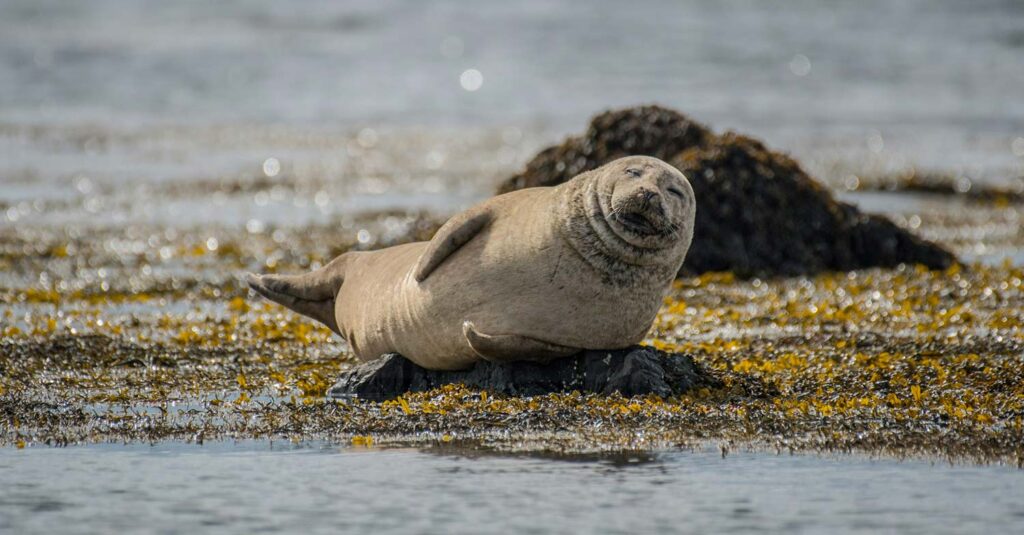Out on the water, kayaking’s often peaceful, just you, your boat, and the open air. But every once in a while, nature throws you a curveball. Imagine paddling along when suddenly a seal decides your kayak looks like a good spot to take a break. It’s surprising, maybe even a little unnerving, but there’s no need to freak out.
Sit Tight and Assess
First things first, don’t start panicking. Freaking out’s the last thing you want to do. The calmer you stay, the calmer the seal is likely to be. If you start moving around too much or yelling, the seal might feel threatened. And that’s a good way to make things worse, right? Seals are curious, sure, but they’re not usually aggressive unless they feel in danger. So, breathe and relax. Let the seal check you and your kayak out.
Sorry mate, can’t help inserting this clip here lol
It may decide to leave on its own without you having to do anything at all. In most cases, they’re just curious or looking for somewhere to rest, and kayaks can easily be mistaken for a rock. If you’re lucky, the seal will get bored and jump off, heading back into the water.
Don’t Rush to Push It Off
If you’re thinking about trying to push it off, maybe hold off on that. Seals are wild animals, and they’re unpredictable. Trying to shove it away could make it feel trapped, and that’s where things can get dicey. Instead, keep your hands to yourself and try to stabilize your kayak. Seals aren’t lightweights – a bigger seal might weigh hundreds of pounds, so if it jumps on you, balancing your kayak might get tricky.
Shift your weight slowly, don’t make any sudden jerks. Sometimes the best thing to do is just wait it out. Keep paddling gently, maybe drift a little, and chances are the seal will get tired of you and hop off.
Don’t Feed or Touch the Seal
Yes, they’re cute, but touching or feeding a wild seal is a bad idea. For one, seals can carry diseases that transfer to humans. And two, feeding wild animals encourages bad habits. Seals that learn to associate humans with food become a danger to themselves and others. If this seal starts expecting handouts, it might approach other people who won’t be as understanding or careful. It’s also illegal in many places to feed wild marine mammals. Just keep your distance, admire it from afar.
If It’s a Big Seal, Be Extra Careful
Bigger seals can cause more problems than smaller ones. If one jumps onto your kayak, its weight might actually tip you over. That’s not something you’d want, especially in cold waters or areas with currents. You don’t wanna end up swimming because a heavy seal decided your kayak was a perfect resting spot. Slowly shifting your weight and keeping the kayak balanced is key here. Again, no sudden movements. Your main goal’s to keep everything stable and wait for the seal to get off on its own.
What About Other Seals Nearby?
Seals are often not alone. If one hops on your kayak, it’s possible there’s a group of them swimming nearby. While seals aren’t typically aggressive, more seals means more unpredictability. If more are close by, you might want to start paddling away, slowly and calmly. Keep a little distance. No need to get surrounded by a bunch of seals all wondering why you’re floating in their territory.
Sometimes, seals will follow kayakers out of curiosity, but it’s important to not let them get too close. Once they’re too comfortable, they might start hopping onto kayaks more frequently, which is something you don’t want. Wildlife should stay in the wild.
In Case You Need Help
Most times, a seal will get bored and leave. But there are situations where you’ll need help. If the seal seems injured or something’s clearly wrong, you’ll want to call local wildlife authorities. Don’t try to fix the problem yourself – they’re wild animals after all. In some areas, seals are protected, and touching or harassing them, even accidentally, can get you in trouble.
There’s usually hotlines for stranded or injured marine life in places where seals are common. If you’re near Alaska, for example, the Marine Mammal Stranding Network’s who you’d call. Other areas have their own contacts, so make sure to know who to reach out to if you’re kayaking in places known for seals.
Plan Ahead for Future Encounters
You can avoid a lot of seal-related drama by planning ahead. Ask locals or check online before heading out – some areas are known seal hangouts. If you know where the seals tend to rest or swim, you can steer clear of those spots. Keep your distance when you spot seals in the water. They’re used to seeing kayakers in some places, like California or certain parts of Europe, but that doesn’t mean they won’t try hopping on if you get too close.
Being aware of your surroundings is key. Knowing the wildlife habits of an area can help you avoid close encounters. And remember, the farther away you stay, the less chance a seal will see your kayak as a resting place.
Wrapping It Up
A seal jumping onto your kayak isn’t an everyday thing, but it happens. You just gotta stay calm and keep your balance. It’s usually harmless and the seal will move on, but knowing what to do ahead of time helps. Don’t feed it, don’t touch it, and if you’re unsure, just wait it out. Respecting their space is important for both your safety and theirs.
If things go south, remember there’s always local authorities or wildlife experts you can reach out to. The more you know, the better prepared you’ll be next time a seal thinks your kayak is a rock!

